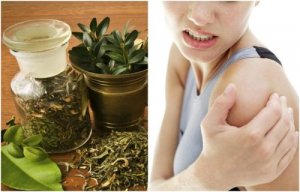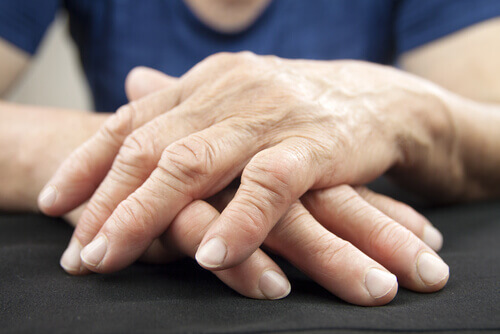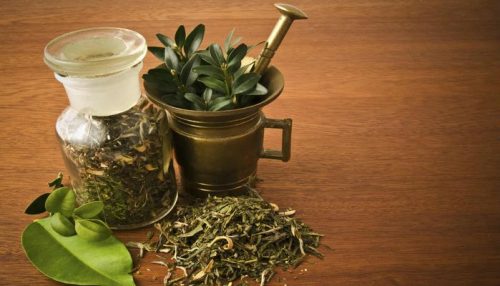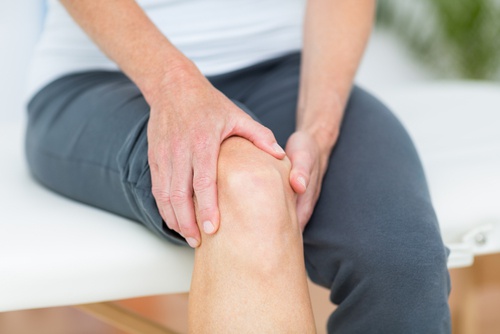Relieve Painful Joints with a Herbal Alcohol Solution


Reviewed and approved by the pharmacist Lourdes Martínez
Painful joints can be due to many things but, whatever the cause, the discomfort usually affects quality of life and limits your daily performance.
The most common treatment options include the use of analgesics and anti-inflammatory drugs. In addition, depending on the origin, you can resort to some therapies.
Furthermore, there are alternative treatments such as acupuncture, as well as home remedies, among which the herbal alcohol you’ll learn to make here today can soothe joint pain. Are you ready for notes?
The causes of painful joints
Joint pain can appear due to physical overexertion, injury or wear and tear due to aging. This is one of the most disabling problems for people with painful joints.
Although it’s usually mild, it tends to interfere with daily performance. It’s usually an inflammatory response triggered by your immune system. However, it can also alert of the deterioration of the cartilage and ligaments that cover the joint.
Some home remedies
When joint pain is present, the recommended medical treatment may involve the use of non-steroidal anti-inflammatory drugs.
As a complement, there are some plant based remedies you can use, among them:
- Rosemary has well-known antimicrobial properties, according to a study conducted by the Universidade Estadual Paulista in Brazil
- Ginger: is one of the best natural anti-inflammatories, which makes it suitable for treating joint pain
- Arnica is common in topical preparations and creams and helps reduce muscle and joint pain resulting from blows or injuries of various kinds
- Turmeric belongs to the ginger family and has joint properties, especially in terms of maintaining flexibility
- Aloe vera, according to a study conducted by Hospital Clínico Quirúrgico Docente Provincial Amalia Simoni Argilagos of Camagüey in Cuba, also has healing properties
- Horsetail is one of the most widely used natural anti-inflammatories
A herbal alcohol solution to relieve painful joints

Herbal alcohol solutions are a natural topical treatment that uses the anti-inflammatory extracts of certain plants to help with joint pain. So says a study conducted by the University of Chinese Medicine.
It’s a mild formulation that gives you the nutrients you need to stimulate blood flow to the painful area, thus helping reduce your symptoms.
- Applying it via massage helps tone your capillaries, preventing circulation disorders and edema
- It has softening effect, helping get swelling under control and encouraging movement in the stiff joint
- And, it stimulates your lymphatic system, aiding in the removal of toxins from your body that are causing inflammation
- It has a positive effect on phlebitis, varicose veins, and thrombosis
- Additionally, it relaxes tight muscles and helps improve cellular oxygenation in order to speed up recovery of the injured or inflamed joints
- Also, it’s a good way to find relief from chronic health issues such as arthritis and bone diseases
- It refreshes tired legs and gets blood flowing in your lower body
Take a look at 7 Reasons Why Your Joints May Hurt
Making a herbal alcohol solution

Making this herbal alcohol ointment means having on hand a soothing, pain-relieving product for painful joints.
While you can use it on already painful joints, it’s best to have it made beforehand so you can apply it as soon as symptoms appear.
- The advantage of this product is that it can be stored for a long time, so you can keep in in your medicine cabinet for anytime you need it
- It’s best to use fresh herbs, with all of their extracts and nutrients
- You can find the herbs in natural food or herb shops
Ingredients
- 1 qt of 96 percent alcohol
- A sprig of rosemary
- A sprig of juniper
- 1 branch of mint
- 1 stalk of aloe vera
- 2 branches of nettle
Tools
- Cutting board
- Glass jar with cover
Preparation
- Sterilize the glass jar and its lid by boiling it in a pot of water for 20 minutes
- Meanwhile, finely chop all the herbs
- Then, once the jar is ready, dry it and add the chopped herbs
- Then pour the alcohol, making sure it completely covers the herbs
- Cover and keep in a cool, dark place for three weeks
- Finally, strain the alcohol to remove the remains of the herbs after this period
We recommend reading Four Herbal Teas for Younger Looking Skin
How to apply

- Add a bit of the alcohol to a clean cloth and rub it into the painful joints
- If you like, apply it with your hands for a relaxing massage
- Use before bed so it can work overnight
- Repeat anytime you feel the pain
- Don’t forget you can also use it for sprains and tendonitis
Pay attention to your painful joints
It’s essential to treat joint pain, because stiffness and pain will increase if not treated in a timely manner. Fortunately, in addition to conventional drugs, there are alternative therapies whose application minimizes the symptoms so they don’t affect the quality of life.
This herbal alcohol solution is one of them and, when applied externally, calms inflammation, improves circulation and reduces discomfort. Finally, making this natural herbal remedy is easy and has is a great for relieving pain.
Follow the indicated steps and keep it around to benefit from its properties. Of course, before applying it, make a small test, as its components could cause unwanted reactions on sensitive skin.
All cited sources were thoroughly reviewed by our team to ensure their quality, reliability, currency, and validity. The bibliography of this article was considered reliable and of academic or scientific accuracy.
- Wang, Q., Kuang, H., Su, Y., Sun, Y., Feng, J., Guo, R., & Chan, K. (2013). Naturally derived anti-inflammatory compounds from Chinese medicinal plants. Journal of Ethnopharmacology. https://doi.org/10.1016/j.jep.2012.12.013
- Singh, A., Malhotra, S., & Subban, R. (2008). Anti-inflammatory and analgesic agents from Indian medicinal plants. International Journal of Integrative Biology. https://doi.org/10.3329/bjp.v1i2.486
- Ribeiro-Santos, R., Carvalho-Costa, D., Cavaleiro, C., Costa, H. S., Albuquerque, T. G., Castilho, M. C., … Sanches-Silva, A. (2015). A novel insight on an ancient aromatic plant: The rosemary (Rosmarinus officinalis L.). Trends in Food Science and Technology. https://doi.org/10.1016/j.tifs.2015.07.015
- Mejri, J., Abderrabba, M., & Mejri, M. (2010). Chemical composition of the essential oil of Ruta chalepensis L: Influence of drying, hydro-distillation duration and plant parts. Industrial Crops and Products. https://doi.org/10.1016/j.indcrop.2010.05.002
- Tsai, M. L., Wu, C. T., Lin, T. F., Lin, W. C., Huang, Y. C., & Yang, C. H. (2013). Chemical composition and biological properties of essential oils of two mint species. Tropical Journal of Pharmaceutical Research. https://doi.org/10.4314/tjpr.v12i4.20
This text is provided for informational purposes only and does not replace consultation with a professional. If in doubt, consult your specialist.








